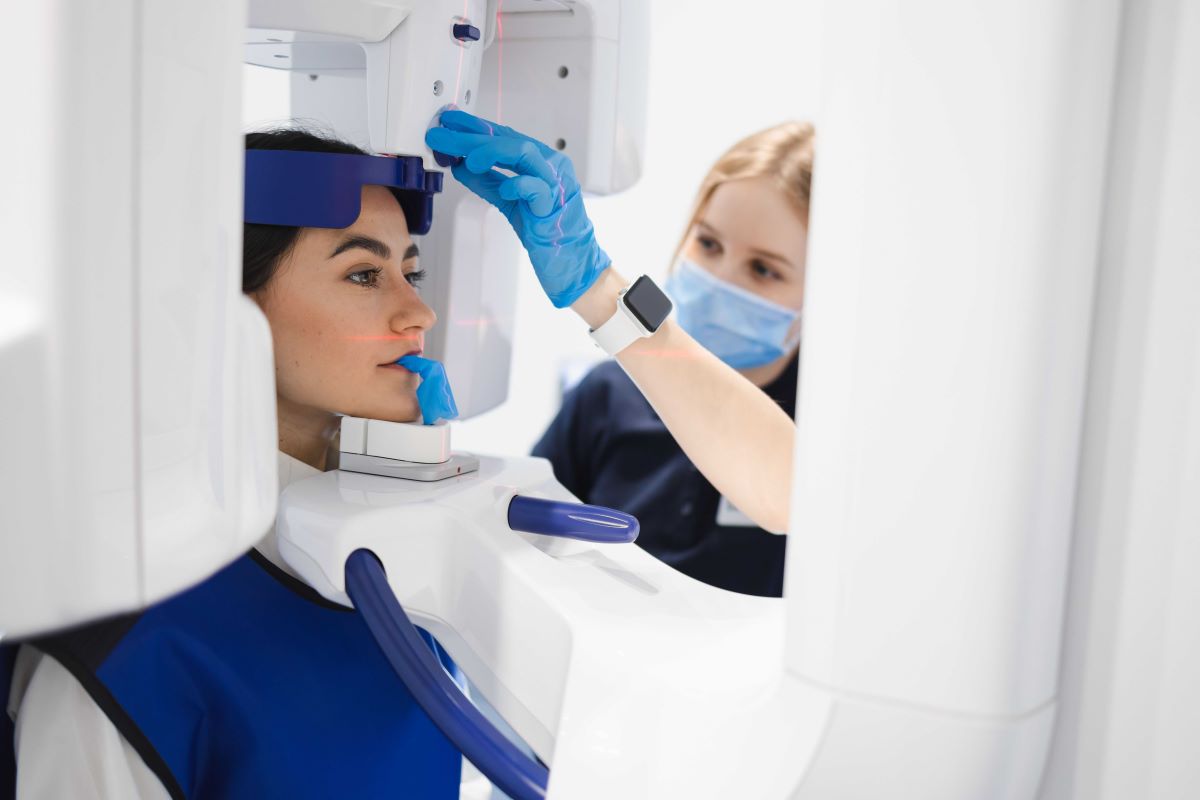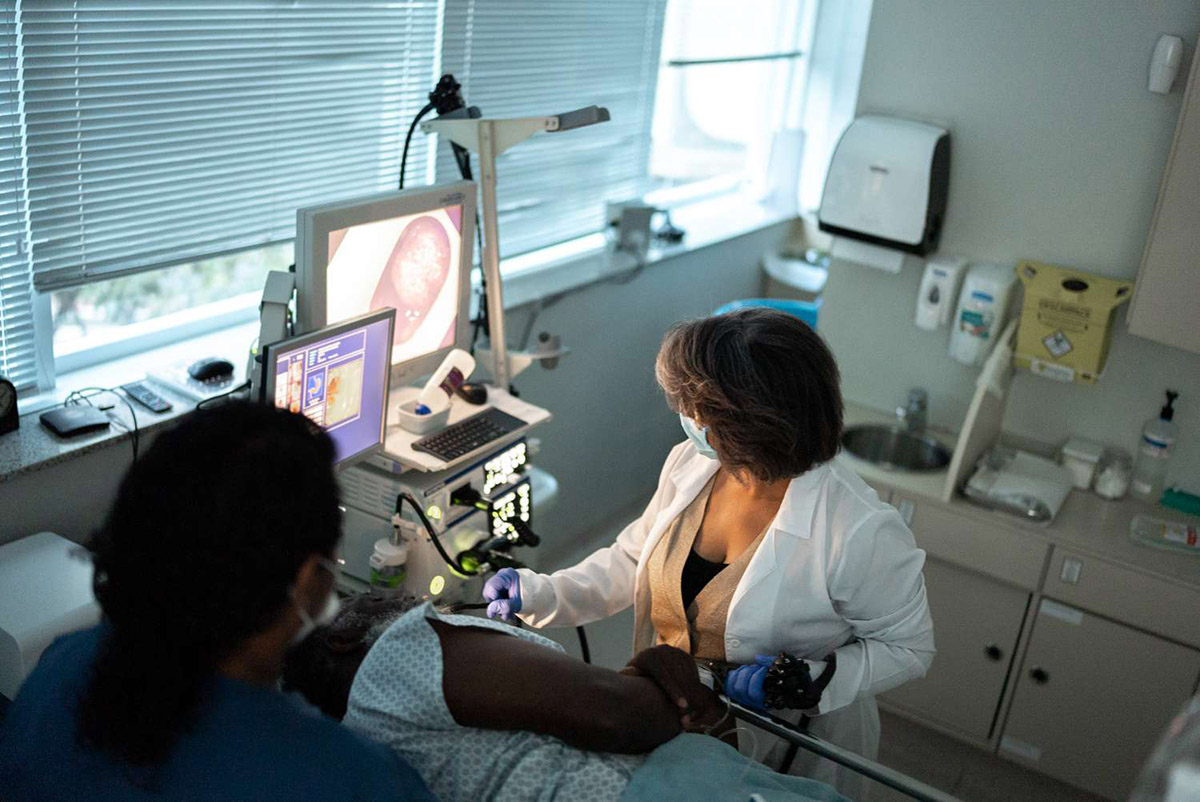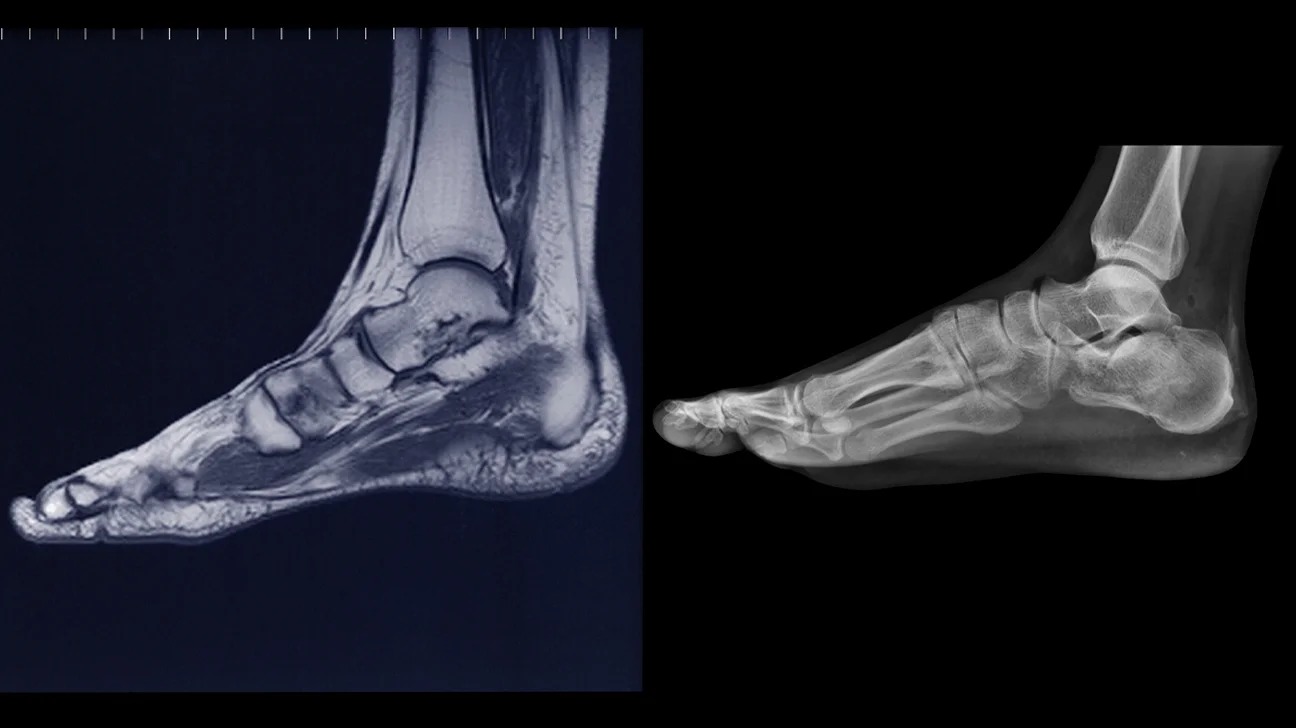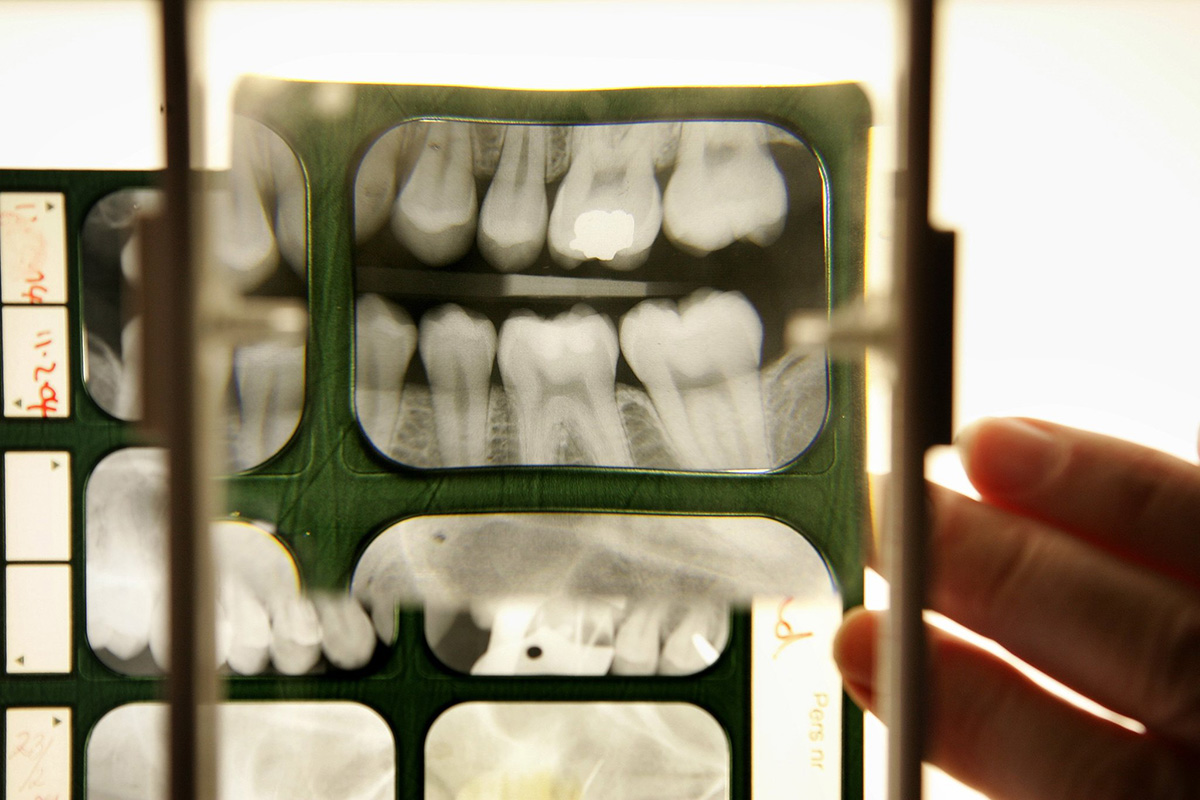Home>Finance>How Much Is It To Get An X Ray Without Insurance


Finance
How Much Is It To Get An X Ray Without Insurance
Published: November 21, 2023
Find out the cost of getting an X-ray without insurance and explore financing options for your medical expenses
(Many of the links in this article redirect to a specific reviewed product. Your purchase of these products through affiliate links helps to generate commission for LiveWell, at no extra cost. Learn more)
Table of Contents
- Introduction
- Understanding the Cost of X-Rays
- Factors that Affect X-Ray Pricing
- Average Price of X-Rays Without Insurance
- Options for Affordable X-Rays without Insurance
- Community Health Centers and Free Clinics
- Urgent Care Centers and Walk-In Clinics
- Diagnostic Imaging Centers
- Negotiating Cash Rates with Healthcare Providers
- Conclusion
Introduction
When it comes to medical expenses, many people find themselves facing the difficult challenge of obtaining necessary diagnostic tests without insurance coverage. X-rays are a common imaging technique used to diagnose a variety of medical conditions, ranging from broken bones to lung infections. However, the cost of getting an X-ray without insurance can be daunting.
In this article, we will explore the factors that influence the price of X-rays and provide you with information on the average cost of X-rays without insurance. Additionally, we will discuss some viable options for obtaining affordable X-rays and share tips on how to negotiate cash rates with healthcare providers.
Understanding the cost of X-rays can help you make informed decisions about your healthcare and budget accordingly. Whether you are uninsured or have a high deductible insurance plan, knowing your options can alleviate some of the financial burden associated with medical expenses.
It is important to note that the prices mentioned in this article serve as general estimates and may vary based on your location, provider, and individual circumstances. It is recommended to research and contact healthcare facilities directly to obtain accurate pricing information.
Now, let’s delve into the intricacies of X-ray costs and explore the various avenues available for obtaining affordable X-rays without insurance.
Understanding the Cost of X-Rays
X-rays are a type of medical imaging technique that uses low levels of radiation to capture images of the inside of your body. They are commonly used to diagnose and monitor a wide range of conditions, including fractures, infections, tumors, and abnormalities in organs.
The cost of an X-ray can vary significantly depending on several factors, including the type of X-ray, the body part being imaged, the healthcare provider, and your location. For example, a simple X-ray of a limb may cost less than a chest X-ray or a specialized imaging procedure.
In addition to the actual procedure, there are other costs that might be associated with getting an X-ray. These can include fees for radiologists who interpret the images, facility charges, and administrative expenses.
It’s important to note that the cost of an X-ray also depends on whether the procedure is performed in a hospital, clinic, or imaging center. Hospitals tend to have higher overhead costs, which can result in higher prices compared to independent imaging centers or clinics.
If you require additional imaging tests, such as MRI or CT scans, the overall cost will be higher. These advanced imaging techniques often require more specialized equipment and expertise, which contribute to the increased expense.
Insurance coverage plays a significant role in determining the overall cost of an X-ray. Some insurance plans cover a portion of the cost, while others require you to meet a deductible or pay a co-pay or co-insurance percentage. However, if you don’t have insurance or your plan doesn’t cover X-rays, you will be responsible for the full cost.
The price of an X-ray can also vary based on geographic location. Different regions may have different healthcare costs, with urban areas generally having higher prices compared to rural areas. It is advisable to research local healthcare providers and compare prices to find the best option for your budget.
Now that you have a better understanding of the factors that influence the cost of X-rays, let’s explore the average price of X-rays without insurance in the next section.
Factors that Affect X-Ray Pricing
Several factors contribute to the pricing of X-rays, and understanding these factors can help you navigate the costs of obtaining an X-ray without insurance. Here are some key factors that influence X-ray pricing:
- Type of X-ray: The specific type of X-ray you need will impact the cost. Different body parts and imaging techniques require varying levels of complexity and resources.
- Location: The cost of X-rays can vary depending on your geographic location and the healthcare market in that area. Prices tend to be higher in urban areas and lower in rural communities.
- Healthcare Provider: The choice of healthcare provider can significantly impact the cost. Hospitals often have higher prices compared to independent imaging centers or clinics due to higher overhead costs.
- Radiologist Fees: The interpretation of X-ray results by a radiologist is an additional expense. The cost of their professional service will be factored into the overall price.
- Additional Services: The pricing may include additional services such as administrative fees, facility charges, or any necessary follow-up consultations.
- Complexity of the Condition: The complexity of your condition may require more specialized imaging techniques or additional images, which can increase the price of the X-ray.
It’s important to keep in mind that these factors are not fixed and can vary depending on multiple variables. It is always recommended to contact healthcare providers directly to obtain accurate pricing information for your specific situation.
Now that you understand the factors that influence X-ray pricing, let’s move on to discussing the average cost of X-rays without insurance in the next section.
Average Price of X-Rays Without Insurance
Getting an X-ray without insurance can be costly, but understanding the average price range can help you plan and budget for this essential medical procedure. It’s important to note that these figures are estimates and can vary depending on various factors such as location, healthcare provider, and specific imaging needs.
The average price of a basic X-ray without insurance can range from $100 to $1,000 or more. The actual cost will depend on factors such as the body part being imaged, the type of X-ray required, and the healthcare facility you choose.
Often, the simplest X-rays, such as those for extremities like arms or legs, tend to be on the lower end of the price range. On the other hand, more complex X-rays, such as those involving the chest or abdomen, may be priced at the higher end of the spectrum.
If additional imaging techniques, such as a CT scan or MRI, are necessary, the price will increase accordingly. These advanced imaging modalities provide more detailed information but are generally more expensive compared to traditional X-rays.
It’s important to keep in mind that the cost of an X-ray is not limited to the imaging procedure alone. Additional expenses, such as radiologist fees, administrative charges, or facility fees, may be incurred.
If you require multiple X-rays, you may be able to negotiate a discounted package rate. Some healthcare providers offer package deals for patients who need multiple imaging studies, which can help reduce the overall cost.
Remember, these price estimates are general and can vary widely depending on your location and healthcare provider. It is always recommended to contact healthcare facilities directly to obtain accurate pricing information for your specific needs.
In the next section, we will explore various options available for obtaining affordable X-rays without insurance.
Options for Affordable X-Rays without Insurance
If you need an X-ray but do not have insurance coverage, there are several options available to help make the procedure more affordable. Here are some viable options to consider:
- Community Health Centers and Free Clinics: Community health centers and free clinics often provide discounted or low-cost medical services to individuals without insurance. These facilities may offer X-ray services at reduced rates or on a sliding fee scale based on your income.
- Urgent Care Centers and Walk-In Clinics: Urgent care centers and walk-in clinics are known for their quick and efficient medical services. These facilities often offer X-ray services on-site, and their pricing can be significantly lower than that of hospitals or specialized imaging centers.
- Diagnostic Imaging Centers: Independent diagnostic imaging centers can provide more affordable X-rays compared to hospitals. These centers focus primarily on imaging services and may offer discounted rates or payment plans for uninsured individuals.
- Negotiating Cash Rates with Healthcare Providers: In some cases, healthcare providers may be willing to negotiate a discounted cash rate if you are upfront about your financial situation. Contacting providers directly and explaining your circumstances could help you secure a more affordable price.
- Researching Local Programs and Initiatives: Some cities or states have programs in place to assist individuals without insurance in accessing affordable healthcare services, including diagnostic procedures like X-rays. Researching and connecting with local organizations can help you find such initiatives in your area.
When exploring these options, it is crucial to inquire about the specific costs involved, including any additional fees for interpretation by a radiologist or follow-up consultations. It’s also important to compare prices and services offered by different providers to ensure you are getting the best possible care at an affordable price.
Remember, affordability is not the only consideration when it comes to healthcare. It is essential to choose a reputable provider with experienced healthcare professionals to ensure accurate and reliable results.
In the next section, we will delve into the topic of negotiating cash rates with healthcare providers to help you secure the most affordable X-ray option.
Community Health Centers and Free Clinics
Community health centers and free clinics are valuable resources for individuals without insurance who need access to affordable healthcare services, including X-rays. These facilities aim to provide medical care to underserved populations and often offer discounted or low-cost services based on income.
Community health centers are nonprofit organizations that receive federal funding to provide comprehensive healthcare services to individuals and families regardless of their ability to pay. These centers typically have a sliding fee scale based on income, which means that the cost of X-rays and other services is adjusted according to your financial situation.
Free clinics, on the other hand, are volunteer-based organizations that offer medical services at no cost to those who are uninsured or underinsured. These clinics may have partnerships with local hospitals or imaging centers to provide X-rays and other diagnostic tests at reduced or no cost.
When visiting a community health center or free clinic, it is important to provide proof of income or provide the necessary documentation to determine your eligibility for discounted services. The staff at these facilities will guide you through the process and help you understand the costs involved.
It’s important to note that while community health centers and free clinics offer affordable healthcare options, availability may be limited, and wait times can vary. It is advisable to schedule appointments in advance and inquire about the specific services offered, including X-rays, to ensure they meet your needs.
Additionally, these facilities may have certain eligibility criteria or prioritize patients with specific medical conditions or urgent needs. It is important to contact the community health center or free clinic in your area to inquire about their services, eligibility requirements, and any documentation you may need to bring.
By utilizing community health centers and free clinics, you can access affordable X-rays and other necessary medical services without insurance coverage, ensuring that you receive the care you need.
In the next section, we will explore the option of visiting urgent care centers and walk-in clinics for affordable X-rays without insurance.
Urgent Care Centers and Walk-In Clinics
Urgent care centers and walk-in clinics are convenient options for individuals without insurance who need access to affordable X-rays. These healthcare facilities are known for providing immediate medical attention for non-life-threatening conditions, including diagnostic services like X-rays.
Urgent care centers and walk-in clinics offer several advantages in terms of affordability and accessibility. These facilities often have extended hours, including evenings and weekends, allowing you to seek medical care outside of traditional business hours.
Price transparency is another benefit of urgent care centers and walk-in clinics. Many of these facilities provide upfront information about the cost of their services, including X-rays, which helps you budget for the expense. Generally, their pricing tends to be lower compared to hospitals or specialized imaging centers.
When visiting an urgent care center or walk-in clinic, you can expect to be seen by a healthcare professional promptly. The on-site medical staff can assess your condition, determine if an X-ray is necessary, and perform the imaging procedure right then and there.
While urgent care centers and walk-in clinics offer convenience and affordability, it is essential to note that they may have limitations in terms of the complexity of conditions they can handle. For complicated or severe medical issues, they may refer you to a hospital or specialized facility for further evaluation and treatment.
It’s important to research and choose a reputable urgent care center or walk-in clinic in your area. Look for facilities that have experienced medical professionals, modern imaging equipment, and positive patient reviews to ensure you receive quality care.
Remember to inquire about the cost of the X-ray and any additional fees for interpretation by a radiologist. Some urgent care centers and walk-in clinics may offer discounted packages for multiple imaging tests, which can further reduce the overall cost.
By utilizing urgent care centers and walk-in clinics for X-rays, uninsured individuals can receive prompt and affordable diagnostic services, ensuring that their healthcare needs are addressed in a timely manner.
Next, we will discuss diagnostic imaging centers and their role in providing affordable X-rays without insurance.
Diagnostic Imaging Centers
Diagnostic imaging centers play a crucial role in providing affordable X-rays to individuals without insurance. These centers specialize in various imaging services, including X-rays, and often offer competitive pricing compared to hospitals.
What sets diagnostic imaging centers apart is their focus on providing high-quality imaging services at a lower cost. These centers typically have advanced imaging equipment and experienced radiology professionals who specialize in interpreting the results of X-rays and other imaging tests.
Diagnostic imaging centers often offer competitive and transparent pricing for their services. They understand the needs of uninsured individuals and strive to provide affordable options, including cash payment options and discounted rates.
By choosing a diagnostic imaging center, you can benefit from their expertise in imaging procedures and access state-of-the-art technology. The lower overhead costs compared to hospitals allow them to offer cost-effective services without compromising on quality.
When considering a diagnostic imaging center, look for centers that are accredited and have a positive reputation for accuracy and customer satisfaction. Reading online reviews and seeking recommendations from healthcare professionals or friends and family can help you choose a reputable center.
Prior to scheduling an appointment, contact the diagnostic imaging center directly to inquire about their pricing and any available discounts or financial assistance programs. They may have flexible payment options or package deals for individuals without insurance.
It’s important to note that while diagnostic imaging centers can provide affordable X-rays, they may not offer a full range of medical services like hospitals. In case your condition requires additional care or specialized treatments, they may refer you to appropriate healthcare providers in their network or offer guidance on where to seek further medical attention.
If you need an X-ray without insurance, considering a diagnostic imaging center can be a cost-effective and reliable option. These centers focus on delivering accurate and affordable imaging services, ensuring that you receive the information you need for proper diagnosis and treatment.
In the next section, we will explore the possibility of negotiating cash rates with healthcare providers to obtain the most affordable X-ray option.
Negotiating Cash Rates with Healthcare Providers
When you don’t have insurance coverage, negotiating cash rates with healthcare providers can be an effective strategy to obtain the most affordable price for an X-ray. Many providers understand the financial challenges individuals face and may be willing to negotiate a discounted rate.
Here are some tips for negotiating cash rates:
- Research and Compare: Before contacting healthcare providers, research and compare prices from different facilities in your area. This information will give you a better understanding of the average cost and help you negotiate more effectively.
- Be Open and Honest: Clearly communicate that you do not have insurance and are seeking a discounted cash rate. Sharing your financial situation upfront may prompt providers to offer more affordable options or consider alternative payment arrangements.
- Ask for Discounts: Inquire about any available discounts, promotions, or package deals. Providers may have special offers or be willing to customize a pricing plan based on your specific needs.
- Offer Upfront Payment: Some providers may be willing to further reduce the cost if you can make a lump sum payment upfront. Offering to pay in cash or by check can sometimes lead to additional discounts.
- Discuss Payment Plans: If paying the full amount upfront is not feasible for you, inquire about setting up a payment plan. Many providers are open to monthly installments that make the cost more manageable.
- Consider Community Programs: Research if there are any local community programs or financial assistance options available. These programs may provide resources to help you negotiate lower rates or obtain financial aid for medical procedures.
Remember, not all providers may be open to negotiation, but it never hurts to ask. By advocating for yourself and demonstrating your commitment to paying, you may be able to secure a more affordable cash rate.
It’s essential to keep in mind that negotiation outcomes may vary depending on the provider, your location, and the specific circumstances. Be polite, persistent, and willing to explore different options to find the best solution for your needs and budget.
Now that you have learned about negotiating cash rates, in the next section, we will summarize the key points discussed and conclude the article.
Conclusion
When it comes to obtaining X-rays without insurance, understanding the cost factors and exploring affordable options is essential. While the prices of X-rays can vary depending on various factors, it is possible to find affordable solutions that meet your healthcare needs.
The average price of X-rays without insurance can range from $100 to $1,000 or more, depending on the type of X-ray, body part being imaged, and location. However, there are several avenues available to help make X-rays more affordable.
Community health centers and free clinics offer discounted or low-cost X-ray services based on income. Urgent care centers and walk-in clinics provide immediate and affordable access to X-rays. Diagnostic imaging centers specialize in imaging services with competitive pricing compared to hospitals.
Negotiating cash rates with healthcare providers is also a viable option. Researching and comparing prices, being open and honest about your financial situation, and exploring discounts or payment plans can help you negotiate a more affordable rate for an X-ray.
It’s important to note that availability, eligibility requirements, and quality of care may vary across different options. Therefore, it is advisable to research and contact healthcare providers directly to obtain accurate pricing information and ensure the best possible care.
Ultimately, understanding the cost of X-rays and exploring the available options will empower you to make informed decisions about your healthcare. By taking proactive steps, you can ensure that you receive the necessary diagnostic tests while managing your financial responsibilities.
Remember, the information provided in this article serves as a general guide, and prices may vary based on location, provider, and individual circumstances. It’s always recommended to seek personalized advice from healthcare professionals or contact specific providers for accurate pricing information.
By navigating the world of healthcare costs with knowledge and resourcefulness, you can obtain the X-rays you need without insurance coverage, ensuring access to essential diagnostic information for your health and well-being.














